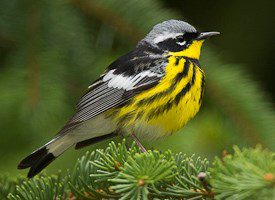For many Gardeners, waiting till the 21st of May is a ritual!
If you want to read more about worms and my garden efforts you can do that right here! Then you will understand why you need the red wigglers too!
Spring has sprung! Gardeners and Conservationists are all jumping for joy!
 "Long-distance migrants typically move from breeding ranges
in the United States and Canada to wintering grounds in Central and
South America. Despite the arduous journeys involved, long-distance
migration is a feature of some 350 species of North American
birds."
"Long-distance migrants typically move from breeding ranges
in the United States and Canada to wintering grounds in Central and
South America. Despite the arduous journeys involved, long-distance
migration is a feature of some 350 species of North American
birds."
 First Nature 993091-546 16 oz. Hummingbird Flower Feeder , RedCheck Price
First Nature 993091-546 16 oz. Hummingbird Flower Feeder , RedCheck Price National Geographic Field Guide to Birds: MichiganCheck Price
National Geographic Field Guide to Birds: MichiganCheck Price Anti-Collision Window Bird Stickers Decals Glass Door Protect and Save Bird Strikes (Clear)Check Price
Anti-Collision Window Bird Stickers Decals Glass Door Protect and Save Bird Strikes (Clear)Check Price
Happy Easter to Everyone!
Plants that need to be brought indoors need special care- A Garden Review
I know I am scoping out all the window areas of my apartment for possible "growing spots", for all the plants I took out to my balcony in the spring.
One of the most important parts of bringing our favorites back to the indoors, is making sure there are no hidden "bugs" hitchhiking their way indoors.
During the summer months outdoors your plants have been visited by many flying, crawling and maybe even jumping insects. Believe it or not I had a grasshopper on one of my plants and we are on the 18th floor of our building. So anything is possible.
When I am bringing my plants indoors, I like to un-pot them! Yes you heard me right. I take my plants out of their pots, set aside the soil they were growing in and move the plants into by bathroom.
Then I shower them well with warm water, on both the top sides of the leaves and the bottom sides as well. I check their roots and if there are roots that look decayed I will snip them back.
I also check their stems to see if there are any scale insects that may have made their home on my plants. One of my Ivies is infested with scale, so I will take cuttings from it and treat the cuttings with Safer's Soap spray. Then I will root these cuttings and start with fresh soil in a few weeks. They will be potted up only when I am sure they are free of the scale insects and have set new roots.
I do get the pots and clean them out with a good hot soapy water solution, and then let them air dry. I will use fresh soil in these pots to give the plants and cuttings a good start in their indoor home.
With my plants, especially the orchids, I let them stay outdoors until the temperatures drop to about 10 degrees Celsiusor 50 degrees Farenheit. Most orchids like a real drop in temperature for a few nights as it signals the plant to set flower bearing stems. Do NOT let these delicate plants freeze! If there is a chance of the temperatures going down close to freezing, bring them indoors for the night.
By January you should be seeing lots of stems on your orchids that will surely lead to some gorgeous flowers. One of my orchids starts blooming in January and doesn't stop till June or July. They are truly one of my many joys.
Having said that, orchids do need special care. Their leaves are tightly figured and can harbor scale or other bugs. I make sure they are drenched with Safer's Soap Spray before they come in for the winter! You can spray them once a week on both sides of their leaves. Better to be safe than sorry. If one plant comes in with a scale infestation, it can ruin all your plants in very short order.
Bringing our plants indoors is a time consuming endeavor if you are a crazy gardener like me. If you only have a few plants(3 or 4) outdoors, you should be able to do this in a weekend. If you are more like me, and have 8-10 plants to bring indoors, you might need a couple of weekends to finish the task.
You don't need to be in a hurry yet, but don't leave this task till late October or November. Then you will be scrambling to get it done. Bringing in the plants without checking them well for pests, could be your downfall. Take the time while the weather is still relatively nice and do it now. Check them all closely and if you don't want to start with fresh pots and soil, you can also drench the plants and soil with the Safer's Soap. It is better to do that then to just bring them indoors without any preventative measures at all.

It is wonderful to be able to reach the information you need in the garden when you are busy with the task at hand.
Here is the List of Bulbs that I plan on planting this fall, for a radiant, colorful garden. I love to have flowers blooming all the time. So I plan these bulbs accordingly. There are many bulbs that will grow in early spring, mid-spring and late-spring almost summer.
 |
| Picture courtesy of Pixabay.com |

Most Recent Reviews on Review This Reviews
The Review This Reviews Contributors
 Sylvestermouse
Sylvestermouse Dawn Rae B
Dawn Rae B MbgPhoto
MbgPhoto Brite-Ideas
Brite-Ideas Wednesday Elf
Wednesday Elf Olivia Morris
Olivia Morris Treasures by Brenda
Treasures by Brenda The Savvy Age
The Savvy Age Margaret Schindel
Margaret Schindel Raintree Annie
Raintree Annie Lou16
Lou16 Sam Monaco
Sam Monaco
 Cheryl Paton
Cheryl Paton Renaissance Woman
Renaissance Woman BarbRad
BarbRad Bev Owens
Bev Owens BuckHawk
BuckHawk Decorating for Events
Decorating for Events Heather426
Heather426 Coletta Teske
Coletta Teske MissMerFaery
MissMerFaery Mickie_G
Mickie_G
Review This Reviews is Dedicated to the Memory of Our Beloved Friend and Fellow Contributor
We may be apart, but
You Are Not Forgotten
“As an Amazon Associate, Ebay (EPN) and or Etsy (Awin) Affiliate, I (we) earn from purchases.” Disclosure Statement